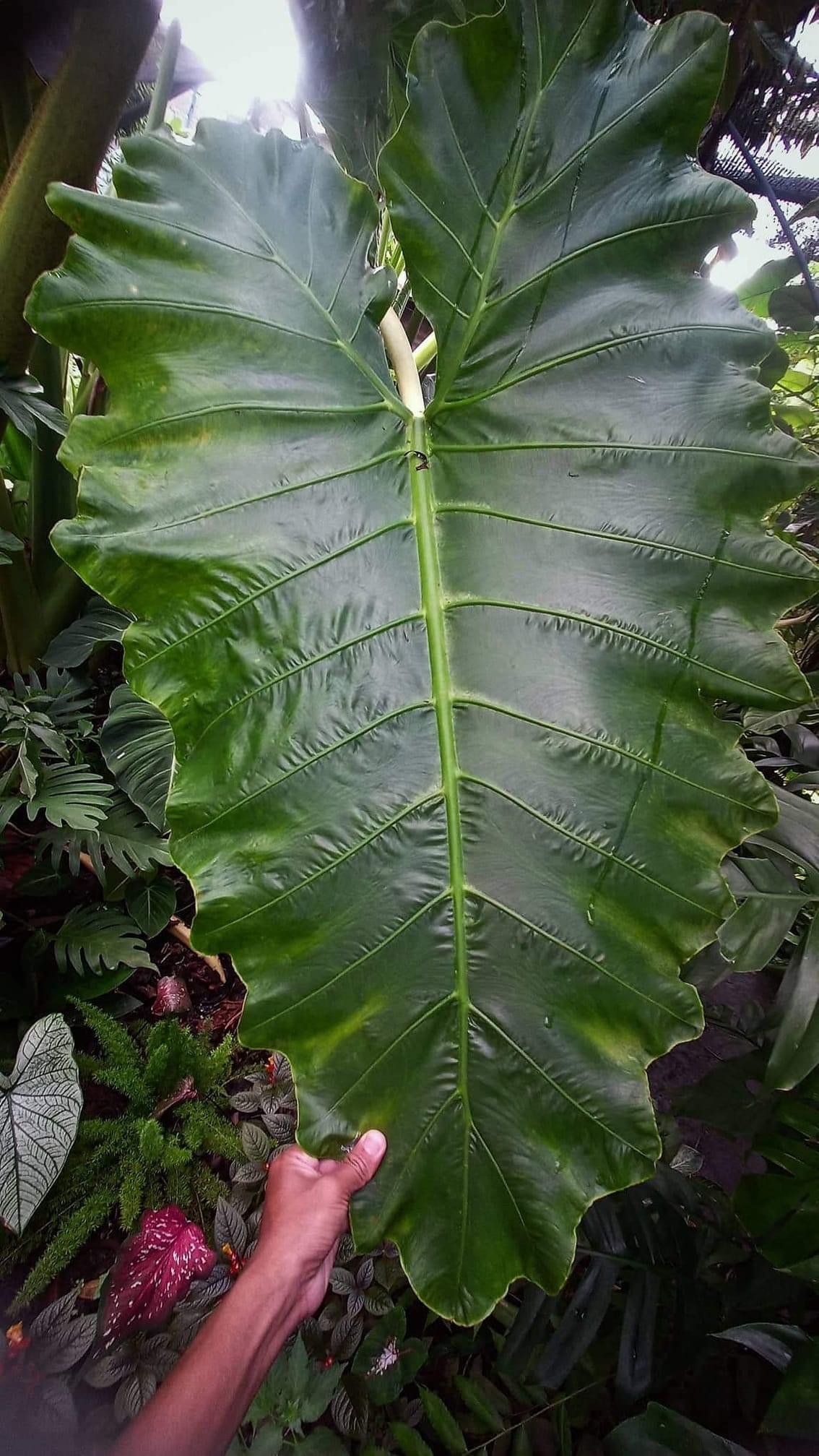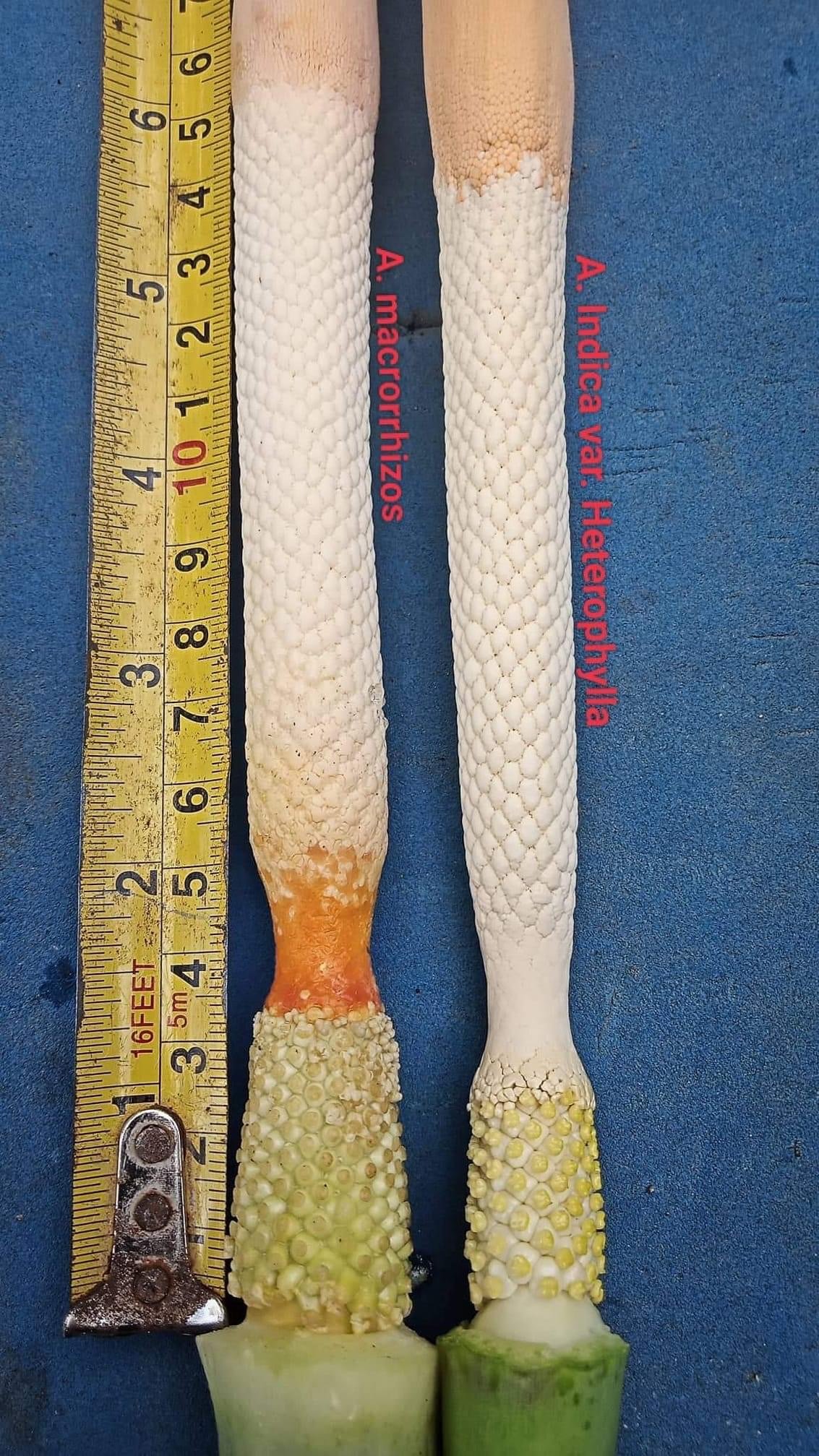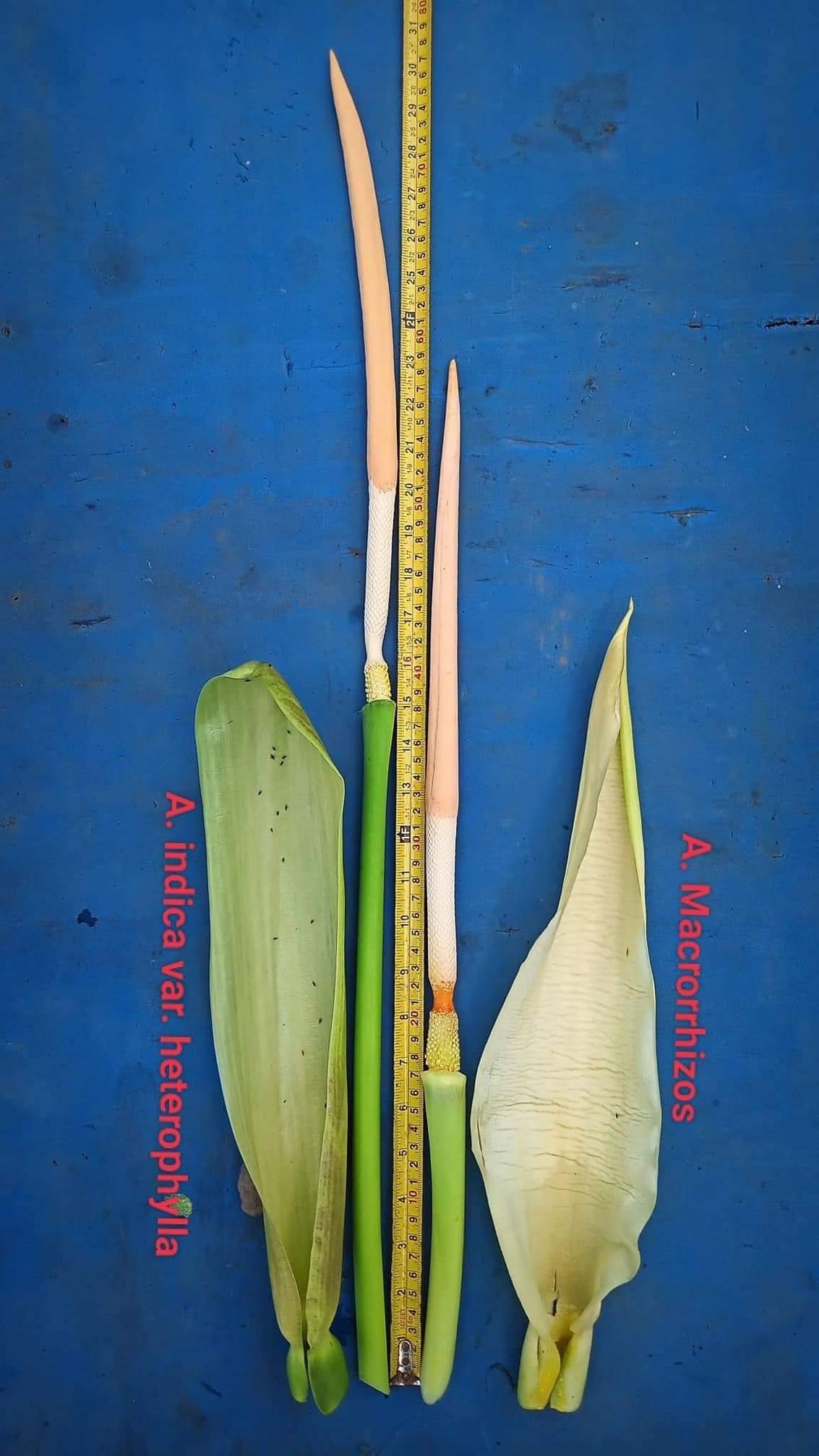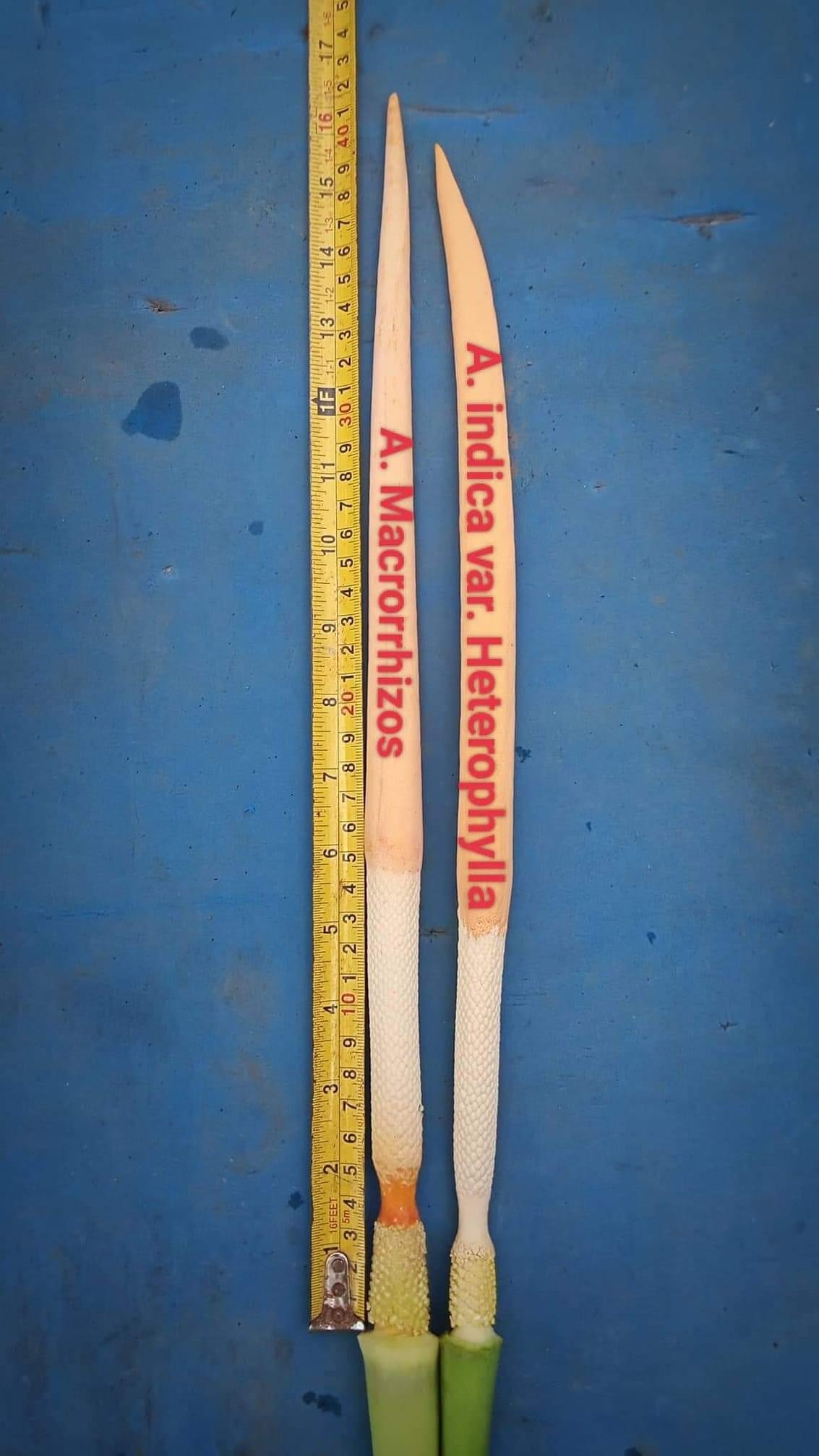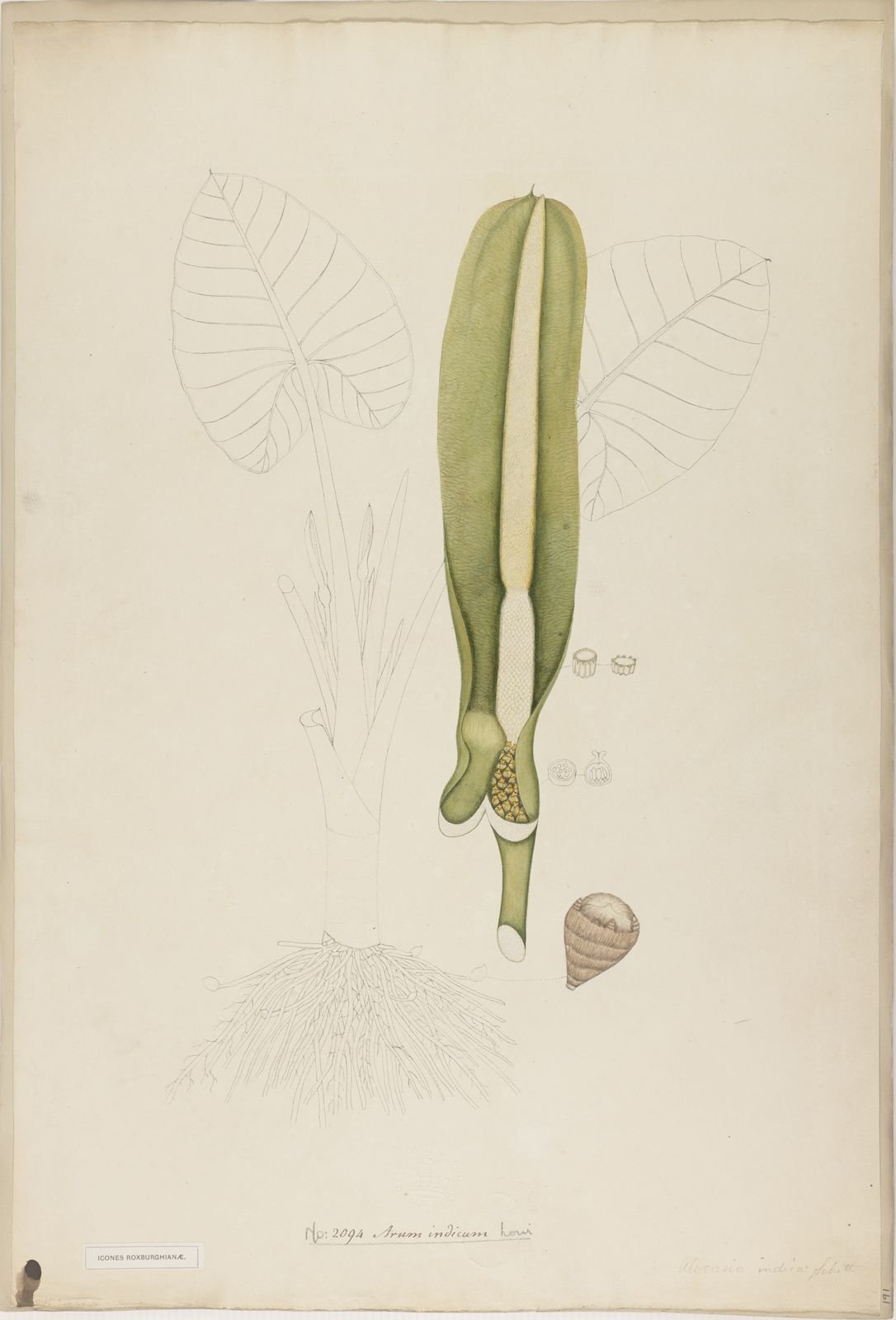ALOCASIA INDICA**
SYNONYMS: Alocasia metallica, Arum indicum, Alocasia variegata, Colocasia indica
DISTRIBUTION: Assam, Bangladesh, East Himalaya, India, Jawa, Laccadive Is., Myanmar, Vietnam
CLIMATE: Tropical humid climate
Humidity is moderate throughout the year, ranging from 60% to 70%
Temperature is varies between the seasons - within the range of 48°F/9°C to 88°F/31°C during the day. Minimum temperatures never dip below 45°F/7°C
Rainy and humid season (October to May) and a dry season between June and October. The average annual rainfall is 1,200 mm
ECOLOGY: Unknown
SPECIES DESCRIPTION:
Leaves ovate-cordate, attaining 2 or 3 ft. in length, the broadly ovate basal lobes or auricles distinct to the petiole.
INFLORESCENCE:
Spathe 6 to 8 in. long or more when full-grown, of a pale greenish-yellow, convolute at the base, the lamina oblong, obtuse or with a short point. Spadix rather shorter, the flowers densely packed, the ovaries occupying about 1 in. of the base, then about 1 in. of barren organs, and 1 1/2or 2 in. of stamens ; the appendix marked with reticulate furrows (indicating abortive stamens ?), as long or longer than the rest of the spadix.
Inflorescence comparisons to the closely related Alocasia macrorrhizos indicate that they are related but may be separated based on the differences.
VARIEGATED FORMS: N/A
ETYMOLOGY: The specific epithet for this species comes from the Latin indica, referring to India, one of the main areas where this species can be found
NOTES:
This species is not accepted by most botanists, who consider it a synonym for Alocasia macrorrhizos.
In Fascicles of Flora of India (2019), Sasikala et al. represented Alocasia indica as a separate and distinct species.
Historically this species was used as both food and medicine, as described below:
Hab. — India, cultivated in Bengral and elsewhere. The root-stock.
Vernacular, — Mánkand, Kachu (Hind), Mán-kachu (Beng.), Kás-alu (Mar.)
History— This large Arum is the Mánaka of Sanskrit writers ; its root-stock is a valuable and important article of diet in Bengal, and often grows to an immense size, being from six to eight feet in length, and as thick as a man's leg. When dried it can be kept for a considerable time and affords a large supply of starchy food. In Western India it is much cultivated as an ornamental plant in gardens, but is little known as an article of diet; the acrid juice of the petioles is however, much used as a common domestic remedy on account of its styptic and astringent properties. The petiole is slightly roasted and the juice expressed. We have seen purulent discharge from the earis in children stopped by a single application. The tubers chopped fine, tied in a cloth and heated, are used as a fomentation in rheumatism….
CULTIVARS: N/A
HYBRIDS: Alocasia ‘Kutawatu’ (Alocasia longiloba ‘Grandis’ x Alocasia indica)
REFERENCES:

